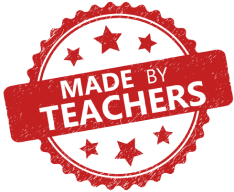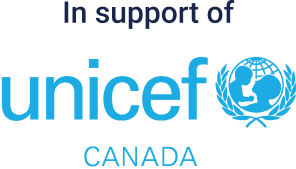Ontario Grade 7

CLICK HERE FOR CURRICULUM CONNECTIONS, LESSONS AND SUPPORT RESOURCES.
Made by a Grade 7 teacher in Ontario.
Kids Boost Immunity (KBI) provides educational content (lessons and support materials) developed by teachers and where needed, health experts, that is directly linked to curriculum and is available completely for free. Each lesson is paired with an online quiz that students can take on a laptop, tablet, or phone. Every time a student scores 80% or higher on a quiz, we donate life-saving vaccines to UNICEF Canada. To learn more about KBI, click here.
Click on the overarching curriculum themes below to see the curriculum outcomes that match KBI educational content. The full Grade 7 Ontario Curriculum Connections document is here.
- Health
-
Curricular outcomes:
Health: Social-Emotional Learning Skills
- A1.6- apply skills that help them think critically and creatively as they participate in learning experiences in health and physical education, in order to support making connections, analysing, evaluating, problem solving, and decision making
- A1.2- apply skills that help them to recognize sources of stress and to cope with challenges, including help-seeking behaviours, as they participate in learning experiences in health and physical education, in order to support the development of personal resilience
Health: Healthy Living
- D1.1- describe benefits and dangers, for themselves and others, that are associated with the use of computers and other digital technologies
- D1.4- identify sexually transmitted and blood-borne infections (STBBIs), and describe their symptoms
Applicable KBI lessons:
1. The Spread of Infectious Diseases
- Science
-
Curricular outcomes:
Science- STEM Skills & Connections
- A3.2- investigate how science and technology can be used with other subject areas to address real-world problems
- A3.3- analyse contributions to science and technology from various communities
Science- Life Systems
- B1.1- assess the impact of various technologies on the environment
- B1.2- assess the effectiveness of various ways of mitigating the negative and enhancing the positive impact of human activities on the environment
- B2.1-explain that an ecosystem is a network of interactions among living organisms and their environment
- B2.2- identify biotic and abiotic components in an ecosystem, and describe the interactions between them
- B2.3-describe roles and relationships between producers, consumers, and decomposers within an ecosystem
Applicable KBI lessons:
1. Diversity of Living Things
- Literacy builder worksheet/answer guide
- Lesson worksheet/answers
- Numeracy activity/answers
2. Environment & Climate Change
- Literacy builder worksheet/answer guide
- Lesson worksheet/answers
- Video worksheet/answers
- Inquiry activities/answer guides
- Numeracy activity/answers
- History
-
Curricular outcomes:
Social Studies: New France & BNA
- A1.2- analyse some of the main challenges facing various individuals, groups, and/or communities, including First Nations, Métis, and Inuit individuals and/or communities, in Canada between 1713 and 1800 and ways in which people responded to those challenges
- A1.3-analyse the displacement experienced by various groups and communities, including First Nations, Métis, and Inuit communities, who were living in or who came to Canada between 1713 and 1800
- A2.2- gather and organize information and evidence about perspectives of different groups and communities, including First Nations, Métis, and/or Inuit communities, on some significant events, developments, and/or issues related to the shift in power in colonial Canada from France to Britain, using a variety of primary sources
- A2.6- evaluate evidence and draw conclusions about perspectives of different groups and communities, including First Nation, Métis, and/or Inuit communities, on some significant events, developments, or issues related to the shift in power in colonial Canada from France to Britain
- A2.7- communicate the results of their inquiries using appropriate vocabulary
- A3.2- identify a few key treaties of relevance to Indigenous people during this period, including wampum belts exchanged, and explain the significance of some of these agreements for different people and communities in Canada
- A3.3- analyse themes explored in First Nations, Metis, and Inuit cultures to demonstrate an understanding of the varied identities, perspectives, relationships, legacies, truths, and ways of knowing, being, and doing.
- A3.4- identify key social and economic changes that occurred in and/or affected Canada during this period , and explain the impact of some of these changes on various individuals, groups, and/or communities, including First Nations, Métis, and/or Inuit individuals and communities
- A3.7- describe significant interactions between various individuals, groups, and institutions in Canada during this period
Language
- C1.7- read, listen to, and view various forms of texts by diverse First Nations, Metis, and Inuit creators to make meaning through Indigenous Storywork about First Nations, Metis, and Inuit histories, cultures, relationships, communities, groups, nations, and lived experiences.
- C2.1- identify and explain prior knowledge from various sources, including personal experiences and learning in other subject areas, that they can use to make connections and understand new texts
- C2.5- explain how the ideas expressed in texts connect to their knowledges and lived experiences, the ideas in other texts, and the world around them
- C2.6- Summarize and record the main idea and supporting details in various texts, and draw well-supported conclusions.
- C3.7- explain how various topic, such as diversity, inclusion, and accessibility, are addressed in texts, analyse the insights or messages conveyed, and identify different positions presented.
Social Studies: Canada 1800-1850
- B1.1- analyse social and political values and significant aspects of life for some different groups and communities, including First Nations, Métis, and Inuit communities, in Canada between 1800 and 1850
- B1.2- analyse some of the challenges facing individuals, groups, and/or communities, including First Nations, Métis, and Inuit individuals and/or communities, in Canada between 1800 and 1850
- B1.3- analyse the displacement experienced by various groups and communities, including Indigenous communities, who were living in or who came to Canada between 1800 and 1850
- B2.7- communicate the results of their inquiries using appropriate vocabulary
Applicable KBI lessons:
1. Life on Turtle Island
- Literacy builder worksheet/answer guide
- Lesson worksheet/answers
- English Language Arts (ELA)
-
Curricular outcomes:
Language: Literacy Connections & Applications
- A2.2- demonstrate an understanding of how to navigate online environments safely, manage their privacy, personal data, and security, and interact in a way that supports their well-being and that of others, including seeking appropriate permission
- A2.3- conduct research, considering accuracy, credibility, and perspectives, with a focus on misinformation, disinformation, and curated information, to construct knowledge, create texts, and demonstrate learning, while respecting legal and ethical considerations
- A2.4- evaluate the use of the various forms, conventions, and techniques of digital and media texts, consider the impact on the audience, and apply this understanding when analyzing and creating texts
- A2.5- demonstrate an understanding of the interrelationships between the form, message, and context of texts, the intended and unintended audience, and the purpose for production
Language: Comprehension
- C1.2- analyze a variety of text forms and genres, including cultural text forms, and explain how their characteristics help communicate meaning
- C1.3- analyze text patterns, such as cause and effect in an expository text, and text features, such as a bibliography and accessible fonts, associated with various text forms, including cultural texts, and explain how they help readers, listeners, and viewers understand the meaning
- C1.5- identify various elements of style in texts, including voice, word choice, word patterns, and sentence structure, and analyze how each element helps create meaning and is appropriate for the text form and genre
- C2.2- identify a variety of purposes for engaging with texts, select texts from diverse creators that are suitable for the purposes, and explain why the selections are appropriate
- C2.4- select suitable strategies, such as visualizing, reading ahead, asking questions, and consulting references and other texts or sources of information, to monitor and confirm their understanding of various texts and solve comprehension problems
- C3.5- explain explicit and implicit perspectives communicated in various texts, including narrative texts, provide any evidence that could suggest bias in these perspectives, and suggest ways to avoid any such bias
- C3.8- compare the critical thinking skills they used when analyzing and evaluating various texts, identify the skills that best supported their understanding, and explain why they were effective
Applicable KBI lessons:
1. Critical Thinking & Evaluating Information
- Literacy builder worksheet/answer guide
- Lesson worksheet/answers
- Video worksheet/answers
- Inquiry activities/answer guides
- Numeracy activity/answers
2. Navigating the World of Online (Mis)Information
- Literacy builder worksheet/answer guide
- Inquiry activities/answer guides
Curriculum-Related Themes Throughout the Year
- Reflecting on hardships and courage during WWII (November)
-
Curricular outcomes:
Language
- A3.3- analyse themes explored in First Nations, Metis, and Inuit cultures to demonstrate an understanding of the varied identities, perspectives, relationships, legacies, truths, and ways of knowing, being, and doing.
- A3.2 – demonstrate an understanding of the historical contexts, contributions, lived experiences, and perspectives of a diversity of individuals and communities, including those in Canada, by exploring and analyzing the concepts of identity, self, and sense of belonging in a variety of culturally responsive and relevant texts
- C1.7- read, listen to, and view various forms of texts by diverse First Nations, Metis, and Inuit creators to make meaning through Indigenous Storywork about First Nations, Metis, and Inuit histories, cultures, relationships, communities, groups, nations, and lived experiences.
- C2.1- identify and explain prior knowledge from various sources, including personal experiences and learning in other subject areas, that they can use to make connections and understand new texts
- C2.5- explain how the ideas expressed in texts connect to their knowledges and lived experiences, the ideas in other texts, and the world around them
- C2.6- Summarize and record the main idea and supporting details in various texts, and draw well-supported conclusions.
- C3.7- explain how various topic, such as diversity, inclusion, and accessibility, are addressed in texts, analyse the insights or messages conveyed, and identify different positions presented
Applicable KBI lessons:
1. Remembrance Day / Veterans Day / Armistice Day
- Building Leadership Skills To Make A Difference For Others (December)
-
Curricular outcomes:
Health:
- A1.2- apply skills that help them to recognize sources of stress and to cope with challenges, including help-seeking behaviours, as they participate in learning experiences in health and physical education, in order to support the development of personal resilience
Applicable KBI lessons:
1. Winter Break - A Time To Reflect on Making a Difference
- Inquiry/creative activities
- Highlighting some key inspirational leaders during Black History Month as well as some experiences of refugees from different parts of the world (February)
-
Curricular outcomes:
Language:
- A1.1- analyze and explain how transferable skills can be used to support communication in various cultural, social, linguistic, and domain-specific contexts, and apply them when reading, listening to, viewing, and creating texts of various forms
- A2.1- evaluate and explain their rights and responsibilities when interacting online with appropriate permission, and make decisions that contribute positively to the development of their digital identity and those of their communities
- A2.2- demonstrate an understanding of how to navigate online environments safely, manage their privacy, personal data and security, and interact in a way that supports their well-being and that of others, including seeking appropriate permission
- A2.3- conduct research, consider accurate, credibility, and perspectives, with a focus on misinformation, disinformation, and curated information, to construct knowledge, create texts, and demonstrate learning, while respecting legal and ethical concerns
- A3.2 – demonstrate an understanding of the historical contexts, contribution, lived experiences, and perspectives of a diversity of individuals and communities, including those in Canada, by exploring and analyzing the concepts of identity, self, and sense of belonging in a variety of culturally responsive and relevant texts
- A3.3 – analyze themes exploring in First Nations, Metis, and Inuit cultures to demonstrate and understanding of the varied identities, perspectives, relationships, legacies, truths, and ways of knowing, being and doing.
- C1.7- read, listen to, and view various forms of texts by diverse First Nations, Metis, and Inuit creators to make meaning through indigenous Storywork about First Nations, Metis, and Inuit histories, cultures, relationships, communities, groups, nations and lived experiences.
- C2.1 – identify and explain prior knowledge from various sources, including personal experiences and learning in other subject areas, that they can use to make connections and understand new texts
- C2.3- make predictions using background knowledge and textual information, pose questions to check whether their predictions were correct, and, if not, adjust their understanding
- C2.5- explain how the ideas expressed in texts connect to their knowledges and lived experiences, the ideas in other texts, and the world around them
- C3.2- make local and global inferences, using explicit and implicit evidence, to develop interpretations about various texts and to extend their understanding
Science- STEM Skills & Connections
- A3.2- investigate how science and technology can be used with other subject areas to address real-world problems
- A3.3- analyse contributions to science and technology from various communities
Applicable KBI lessons:
1. Black History Month
2. Refugee Experiences
- Lesson worksheet/answers
- Inquiry activities
- Celebrating Inspiring Women in STEM (March)
-
Curricular outcomes:
Language:
- A2.3- conduct research, consider accurate, credibility, and perspectives, with a focus on misinformation, disinformation, and curated information, to construct knowledge, create texts, and demonstrate learning, while respecting legal and ethical concerns
- C2.1 – identify and explain prior knowledge from various sources, including personal experiences and learning in other subject areas, that they can use to make connections and understand new texts
- C2.3- make predictions using background knowledge and textual information, pose questions to check whether their predictions were correct, and, if not, adjust their understanding
- C2.5- explain how the ideas expressed in texts connect to their knowledges and lived experiences, the ideas in other texts, and the world around them
- C3.2- make local and global inferences, using explicit and implicit evidence, to develop interpretations about various texts and to extend their understanding
Science- STEM Skills & Connections
- A3.2- investigate how science and technology can be used with other subject areas to address real-world problems
- A3.3- analyse contributions to science and technology from various communities
Geography:
- A1.2- compare and contrast the perspectives of some different groups on the challenges and opportunities presented by the natural environment
Applicable KBI lessons:
1. International Women's Day - Celebrating Inspiring Women in STEM
- Literacy builder worksheets/answer guides
- Numeracy activity
- Inquiry activities
- Understanding communicable diseases and how they are spread, and learning about immunization. Suggested during flu season, immunization awareness week, and school vaccinations (if applicable)
-
Curricular outcomes:
Language:
- A2.3- conduct research, consider accurate, credibility, and perspectives, with a focus on misinformation, disinformation, and curated information, to construct knowledge, create texts, and demonstrate learning, while respecting legal and ethical concerns
- C2.1 – identify and explain prior knowledge from various sources, including personal experiences and learning in other subject areas, that they can use to make connections and understand new texts
- C2.3- make predictions using background knowledge and textual information, pose questions to check whether their predictions were correct, and, if not, adjust their understanding
- C2.5- explain how the ideas expressed in texts connect to their knowledges and lived experiences, the ideas in other texts, and the world around them
- C3.2- make local and global inferences, using explicit and implicit evidence, to develop interpretations about various texts and to extend their understanding
Applicable KBI lessons:
1. Immunization Awareness Week
2. The Spread of Infectious Diseases
3. Scientific Curiosity and Vaccine Discoveries
- Literacy builder worksheets/answer guides
- Inquiry activities




